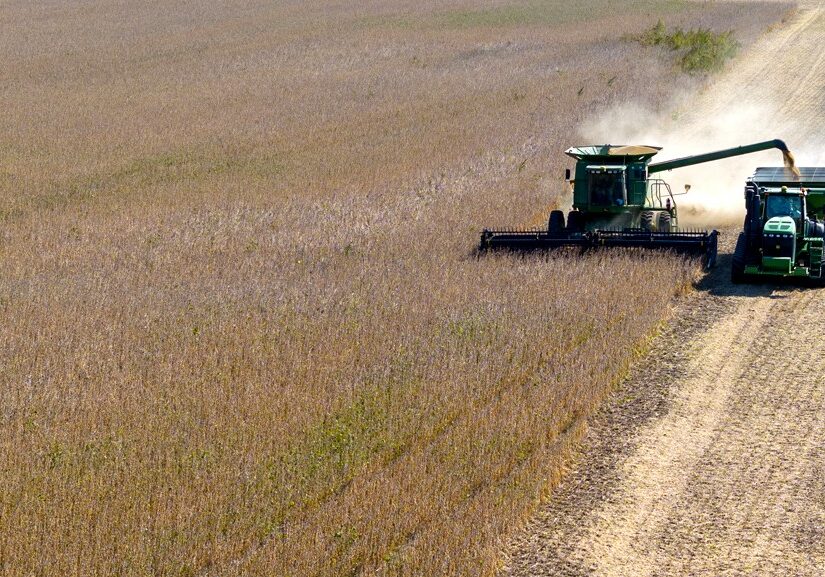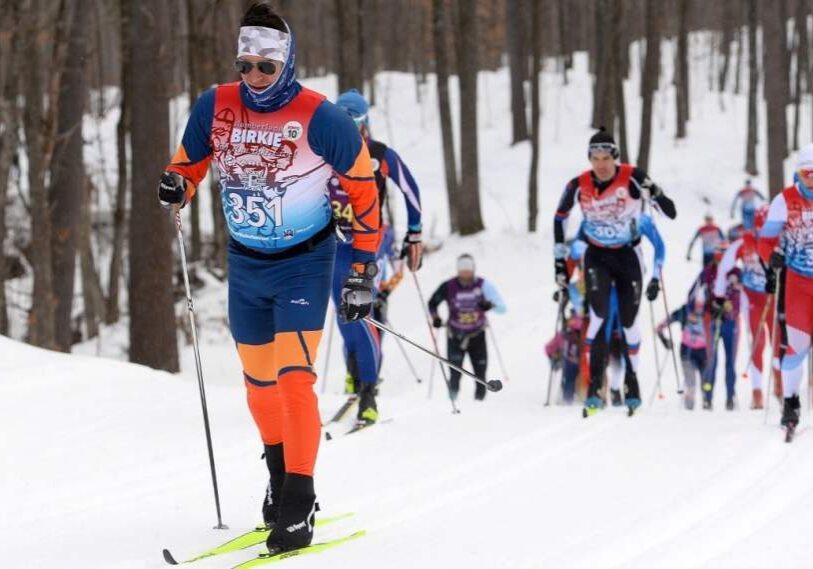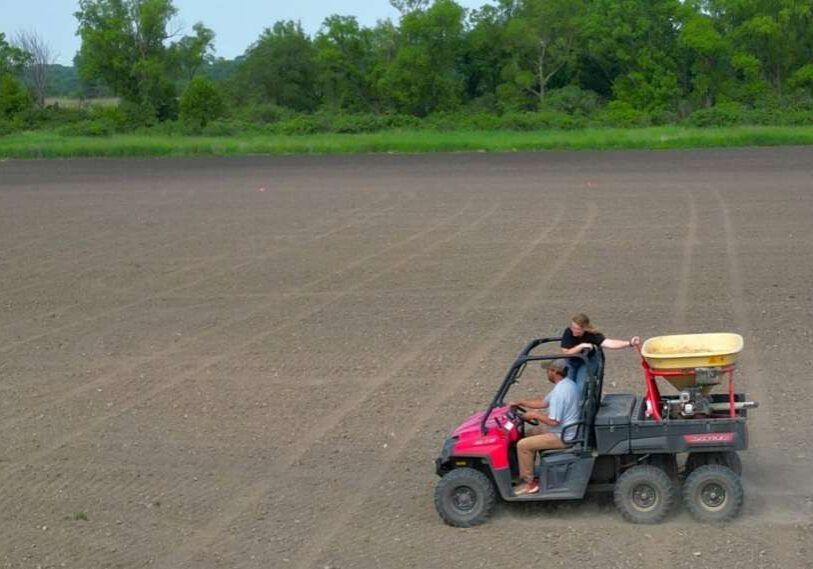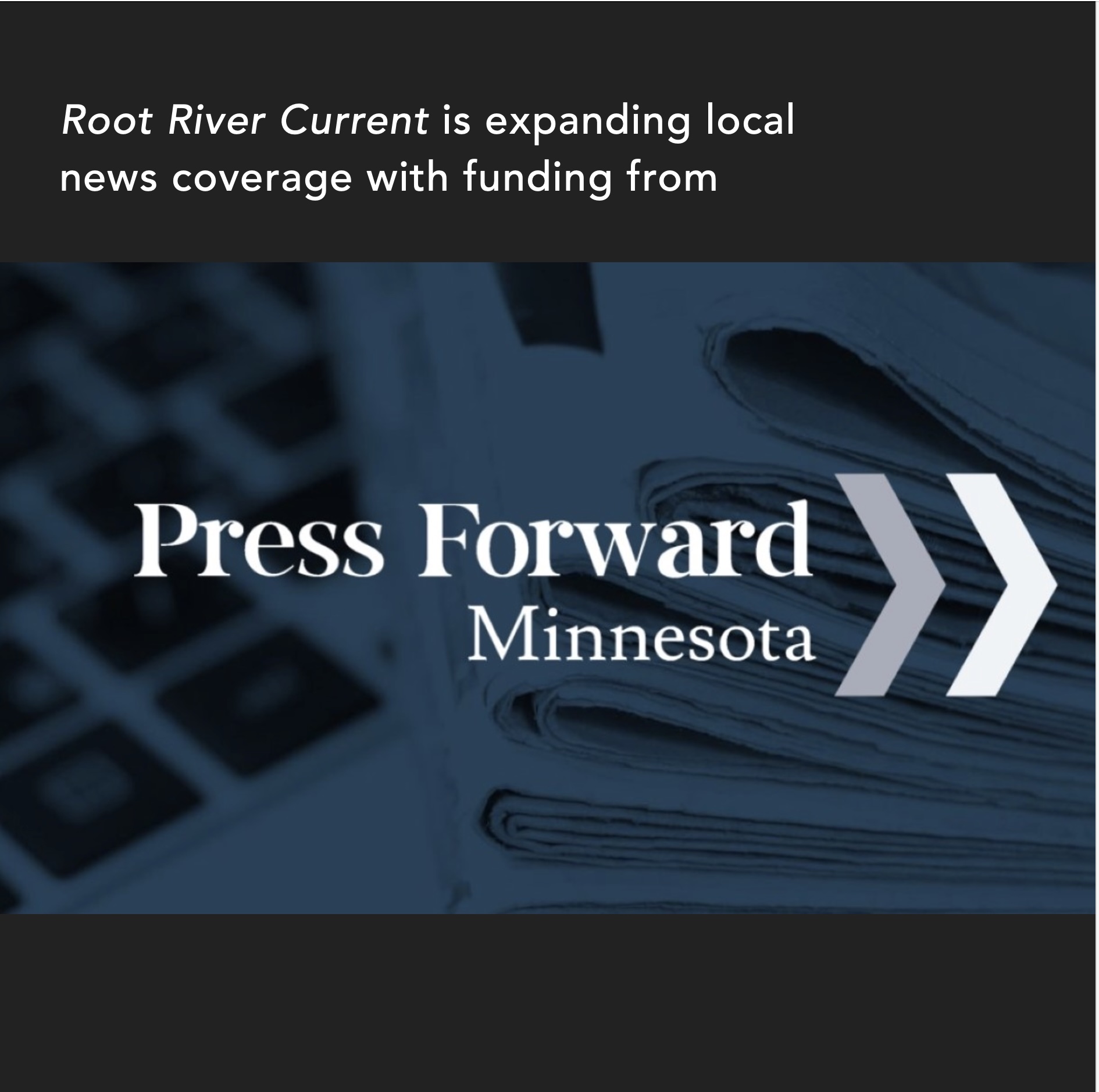Conservation Conversation on Climate Smart Agriculture and Water Quality
Farmers working with Fillmore County Soil and Water Conservation District

This article is the second in a series of conversations about conservation with southeastern Minnesota farmers, landowners and conservationists.
FILLMORE COUNTY – Southeastern Minnesota has mystifyingly unique landscapes and ecosystems, from deep river valleys to sinkholes to dramatic bluffs to sandstone cliffs. And that makes land management both perplexing and challenging for land-use professionals.
Staff with the Fillmore County Soil and Water Conservation District dedicate their working lives to conserving this landscape through education, resources and financial assistance to help farmers and landowners promote conservation of natural resources. These dedicated employees wear many hats each day from collecting water samples in the field to helping farmers apply for various conservation programs.
Mission: Conservation
Soil and Water Conservation Districts (SWCD) were started in the 1930s in response to the Dust Bowl and the soil erosion that occurred. Today, clients who walk into a SWCD office all have different needs, especially depending on where you live in Minnesota.
In Fillmore County, clients are looking for assistance in engineering, waterways, grade stabilization, streambank restoration, water quality sampling, nutrient management, soil health practices, agriculture best management practices, loan programs and more. Some clients in Northern Minnesota may need more forestry-related assistance, and urban residents may ask for assistance with rain gardens or urban stormwater.
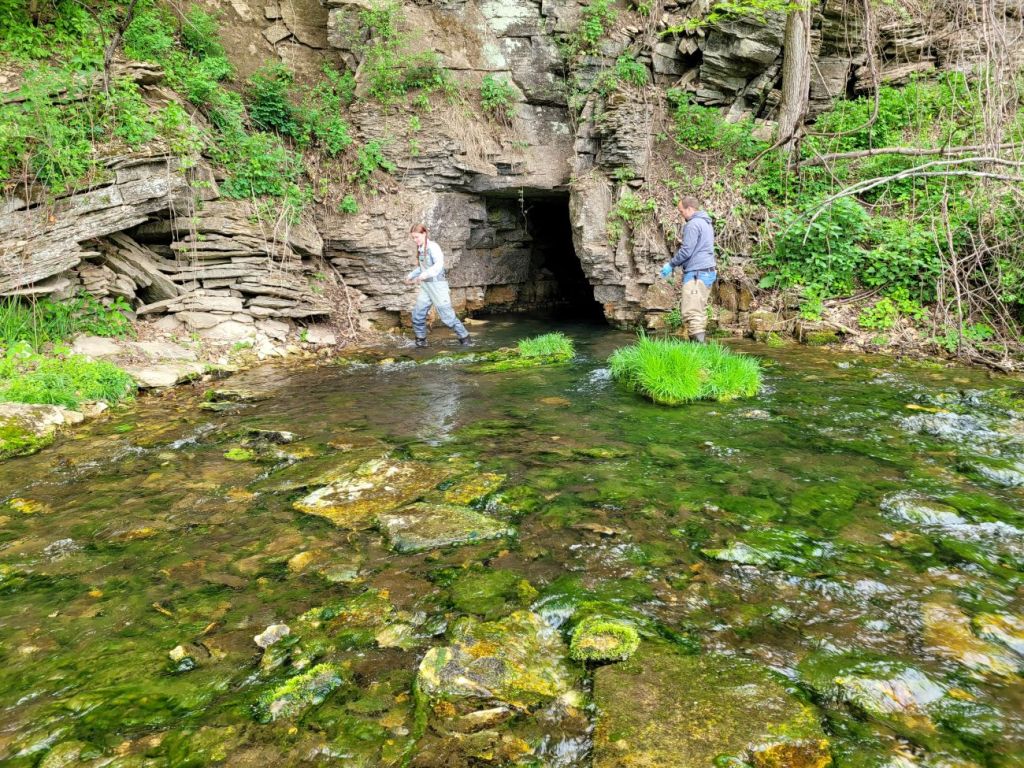
Former Fillmore SWCD Intern Maggie Windingstad (left) and Aaren Mathison (right) collect water samples and flow measurements at Odessa Spring, southwest of Harmony; this sliver of the county is in the Upper Iowa River watershed. (Photo by Nikki Wheeler)
Some of the other hats the team at Fillmore SWCD wear include offering free testing for private wells and stream water samples for nitrates any time of the year, testing irrigation water for bacteria for farmers that sell at farmers’ markets, and they are certified to test temporary water lines for bacteria during city street improvement projects.

The Root River watershed stretches from eastern Mower County to its confluence with the Mississippi River in Houston County. (Minnesota Water Resource Center map)
The Root River watershed is one of Minnesota’s largest watersheds and travels 81 miles through six counties. It encompasses nearly all of Fillmore County.
The landscape covered by this watershed includes glacial till, karst and blufflands, so management plans must address these diverse features.
Fillmore SWCD works with landowners and various partners to find ways to reduce the impacts of various land use on water quality and soil health.
One large part of its work is helping landowners identify Best Management Practices to help promote land conservation and water quality.
Secondly, together with its partners, staff collect data to determine how those practices are impacting conservation and water quality. The Fillmore SWCD team definitely stays busy year-round with different seasons requiring different work.

The best management practice shown in this photo is an earthen flood control dam originally built in the 1950s and rehabilitated in 2017-2018. It is designed to temporarily hold 23 million gallons of water with the emergency spillway designed to hold 68 million gallons. (Photo by Nikki Wheeler)
Best Management Practices
Best Management Practices, or BMPs, are practices that help improve water quality in the Root River watershed. Fillmore SWCD staff work with landowners to identify the best BMPs to help reduce nutrient or sediment run-off, to ultimately reduce pollutants that enter the watershed.
According to Fillmore SWCD District Administrator Riley Buley, some of the BMPs that Fillmore SWCD helps landowners implement include “cover crops and soil health practices, nutrient management, waterways and grade stabilization structures, to help reduce nutrients that need to be applied and to prevent the soil from moving.”
Staff do site visits, identify resource concerns, prescribe or recommend whatever BMPs might be of interest to the landowner and depending on available funding, find a cost share program. After a couple of years, the landowner takes over the cost on their own.
Sara West, Fillmore SWCD Nutrient Management Specialist, is working with the University of Minnesota and the Minnesota Department of Agriculture on the ecological side of some of the best management practices, such as cover crops and nutrient management. She often presents to landowners that, “these are the things you can change in your operation to be more profitable and see environmental improvement.”
Sara explains it is often trial and error, and sometimes they try a change on 10 acres and see what works or not, before implementing a change in a larger area.

Fillmore SWCD Resource Conservation Specialist, Doug Keene, assists with the construction of a Grade Stabilization Structure. (Photo by Steve Werblow, Conservation Technology Information Center)
When helping a landowner find and implement BMPs, Fillmore SWCD staff are wearing the multiple hats of teacher, technician and administrator. Their efforts help farmers and landowners find BMPs that fit their operation, landscape and budget, and the Root River watershed benefits from reduced sediment and nutrient run-off.
Field to Stream Partnership
With great participation from Fillmore County landowners in implementing various BMPs, Fillmore SWCD collects various data through different programs to monitor the impact of BMPs.
The Field to Stream Partnership, started in 2009 by the Minnesota Department of Agriculture, is a unique project in the Root River watershed that Fillmore SWCD implements along with several other partners.
“This is an intensive, comprehensive and long-term project,” said Nikki Wheeler, Fillmore SWCD Water Management Coordinator. “This data can tell us if the Best Management Practices are working or not, and how long it will take before we can expect to see water quality improvements.”
“This is actual research happening in your backyard,” shared Aaren Mathison, Fillmore SWCD Conservation Technician. Aaren explained that with 16 years of continuous data collection and the region’s unique karst topography, there are few projects like this in the world.

Aaren Mathison conducts a stream site elevation survey. Note the furry friend in the background. (Photo by Nikki Wheeler)
The partnership has three phases with the first phase being baseline data collected from several different water quality monitoring stations within small watersheds of the Root River watershed. Water quality samples are collected from multiple scales, including fields, drain tiles, springs, streams, wells and even caves. Most samples are analyzed for sediment and nutrients, and some well and stream sites are also measured for pesticides.
The second phase of the partnership involved targeting high-risk runoff areas, implementing additional Best Management Practices and offering assistance to become Ag Water Quality Certified.
Phase three is ongoing and will measure water quality performance over the next several years under different weather conditions.
Aaren and Nikki both work diligently with this partnership, going out every two weeks at a minimum to take samples to send to the Minnesota Department of Agriculture for testing.
Aaren also remarked how part of the job is to “retrofit the sampling equipment to fit the needs out in the field.” Resourcefulness, engineering and creativity are needed to keep this scientific research going.
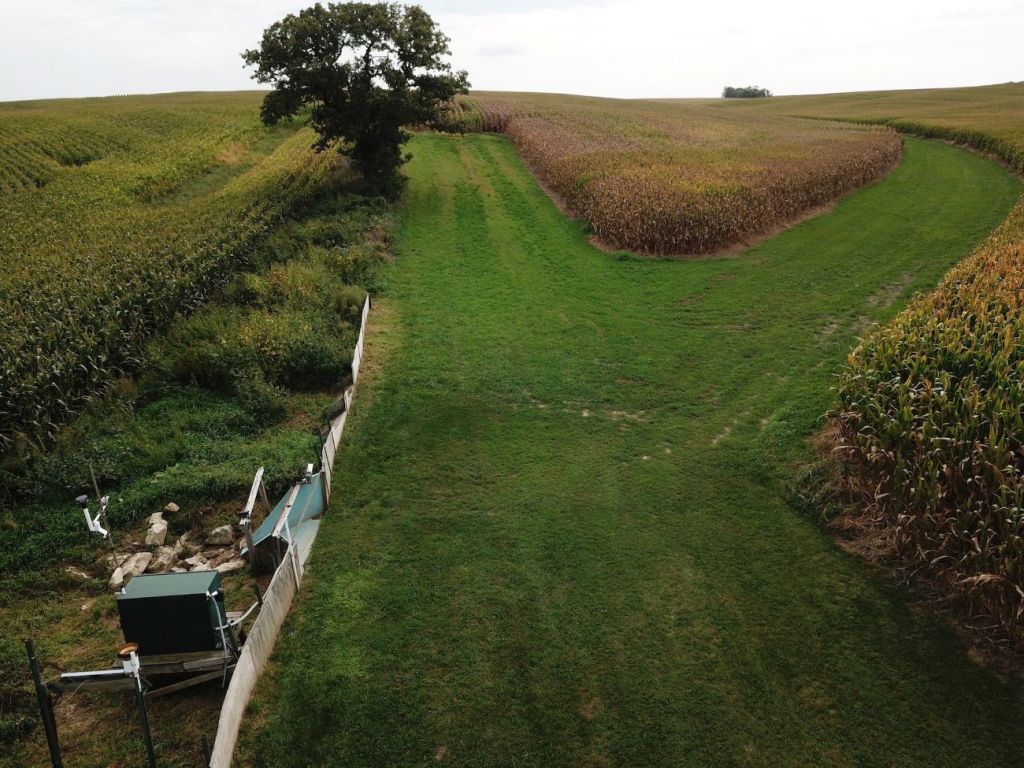
A field to stream field site is shown where water data is collected (lower left) as it comes off of the farm field. (Photo by Steve Werblow, Conservation Technology Information Center)
Through several years of data collection, the Fillmore SWCD team found that May and June are when a lot of nutrients, sediment and pesticide loss moves off the land through surface runoff. Therefore, the BMPs of no-till planting, cover crops, edge of field buffers and sediment control basins are recommended to reduce runoff during this time of the year.
One other focus of this research project is to help answer questions and provide education related to groundwater. For example, the team has conducted dye tracing which uses environmentally safe dye to follow groundwater pathways from sinkholes to springs and streams.
The Minnesota Department of Agriculture, the Minnesota Department of Natural Resources and local Emergency Management are partners that appreciate having this specific information. Fillmore SWCD used this groundwater research to create videos and graphics to help educate people about groundwater movement and the complexities of the karst landscape.
Watershed Pollutant Load Monitoring Network
The water quality team at Fillmore SWCD is also involved in the WPLMN, or Watershed Pollutant Load Monitoring Network – a state-wide sampling program through the Minnesota Pollution Control Agency, and the whole program is a partnership between federal, state, university and local organizations.
Since 2013, Fillmore SWCD has monitored five sites in Houston and Fillmore counties along the Root River from ice-out through October 31st.

One of the many streams in Fillmore County that benefits from SWCD programs. (Photo by Nikki Wheeler)
Root River Watershed: One Watershed, One Plan
In 2016, 13 local government units created a team to author the Root River Watershed One Watershed, One Plan (1W1P) document. Implementation of the plan started in 2018, and it also includes portions of the Upper Iowa River watershed and the Mississippi-Reno watershed. This document serves as a comprehensive ten-year plan and the first in Minnesota, to help manage the Root River watershed.
This plan also works with the Minnesota Department of Agriculture, Minnesota Department of Natural Resources, and the Minnesota Pollution Control Agency to track water quality in the area. The Fillmore SWCD team manages this plan as the day-to-day contact and is the fiscal agent, managing the funds that landowners and stakeholders have access to use as cost-share for BMPs.
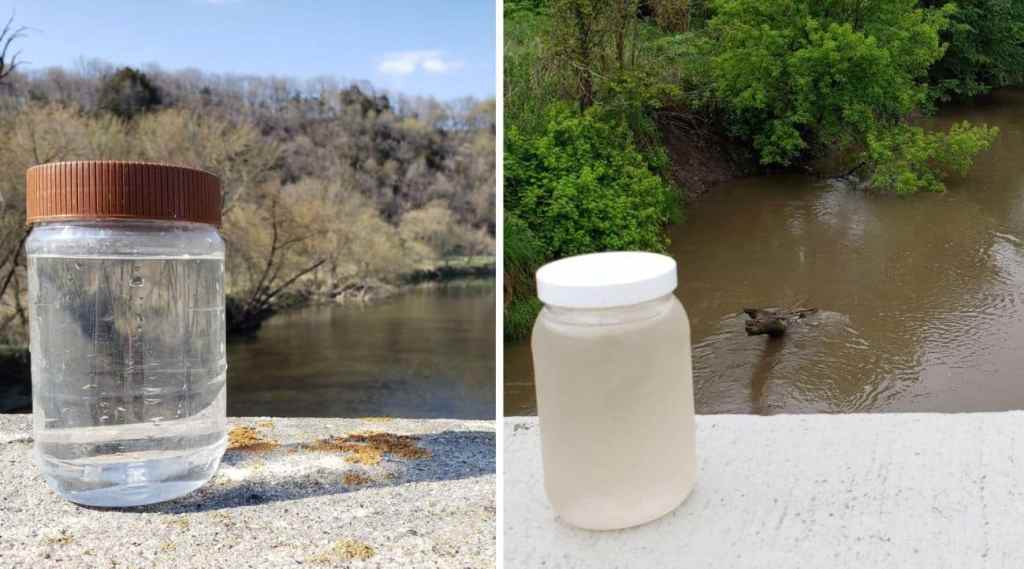
(Left) Baseflow water sample taken in May from the Root River North Branch at Moens Canoe Access. (Right) July stormflow water sample from the south fork of the Root River. (Photos by Nikki Wheeler)
Wearing many hats to serve all
Fillmore SWCD staff wear multiple hats each day to help the people of Fillmore County, directly and indirectly. From staff education to site visits to combing through and implementing programs, it takes many hours of dedicated service to bring this program to life.
The Fillmore SWCD team, state and federal partners, landowners and farmers, are all working together to serve us all. Their work and dedication ultimately help everyone that lives in and visits the Root River watershed by promoting practices and research that positively impact water, air and soil quality.
If you are a landowner interested in assistance from Fillmore County Soil and Water Conservation District, you can learn more on the Fillmore SWCD website or call their office at 507-887-0240.
One new program that Fillmore SWCD has seen take off is the Advancing Markets for Producers, formerly known as the Alliance to Advance Climate Smart Agriculture. Minnesota is one of the four states included in this pilot program that began in 2023 and managed by Virginia Tech University. Fillmore County is one of eight Minnesota counties in this pilot program and is in its third round of sign-ups. Because of federal funding freezes in early 2025, the program hit a temporary pause. When funding was released again, it was one of 15 out of 115 federal programs to keep going as it met certain program metrics set by the federal government. This program is an incentive program to prioritize climate smart agricultural practices such as nutrient management, cover crops, reduced tillage, no-till, prescribed grazing, feed management, silvopasture and more. It pays farmers up to $100 per acre or $100 per animal unit to implement these agricultural practices. The photo on the left shows a field site in summer, while the photo on the right shows the same field site in winter. This is one site where Fillmore SWCD collects data for the Field to Stream Partnership. (Photos by Nikki Wheeler) The program couldn’t have been timelier in Fillmore County as awareness grew in the last couple years about the levels of nitrates in drinking water and how agriculture can contribute to nitrate run-off. After the first round of 4400 postcards were sent out to landowners by Fillmore SWCD, newspaper ads were published and a producer meeting was held in Mabel, Minn., the program took off in Fillmore County. Then word of mouth spread, and Fillmore County now has 234 contracts with farmers totaling 13,290 acres and $1,329,031 in funding awarded to Fillmore County producers. This is the most funding of the eight Minnesota counties enrolled in this pilot program. Fillmore SWCD team members, such as Soil Health Conservation Technician Anesa Liptak, meet with farmers multiple times to educate them about the program and tailor their contracts to meet the needs of their operation. These meetings, she said, are designed to explain the ecological benefits, such as reduced soil erosion or reduced fertilizer inputs, and then explains the financial benefits, such as the funds received from the contract can still help a farmer make revenue goals if a yield is lower than expected. The technicians then collect information from the producers, so they can receive their contracted payments. Riley Buley expects that there is one more year ahead in this pilot program, and then the pilot program’s goal will be to get adopted into the next United States Department of Agriculture Farm Bill. Riley expects the State of Minnesota will have other programs prioritizing soil health to be unveiled soon as well. What’s next? Pilot program informs future opportunities

For additional information on agricultural conservation topics, read the first article in this series: Conservation Conversation with Farmer Duane Bakke
